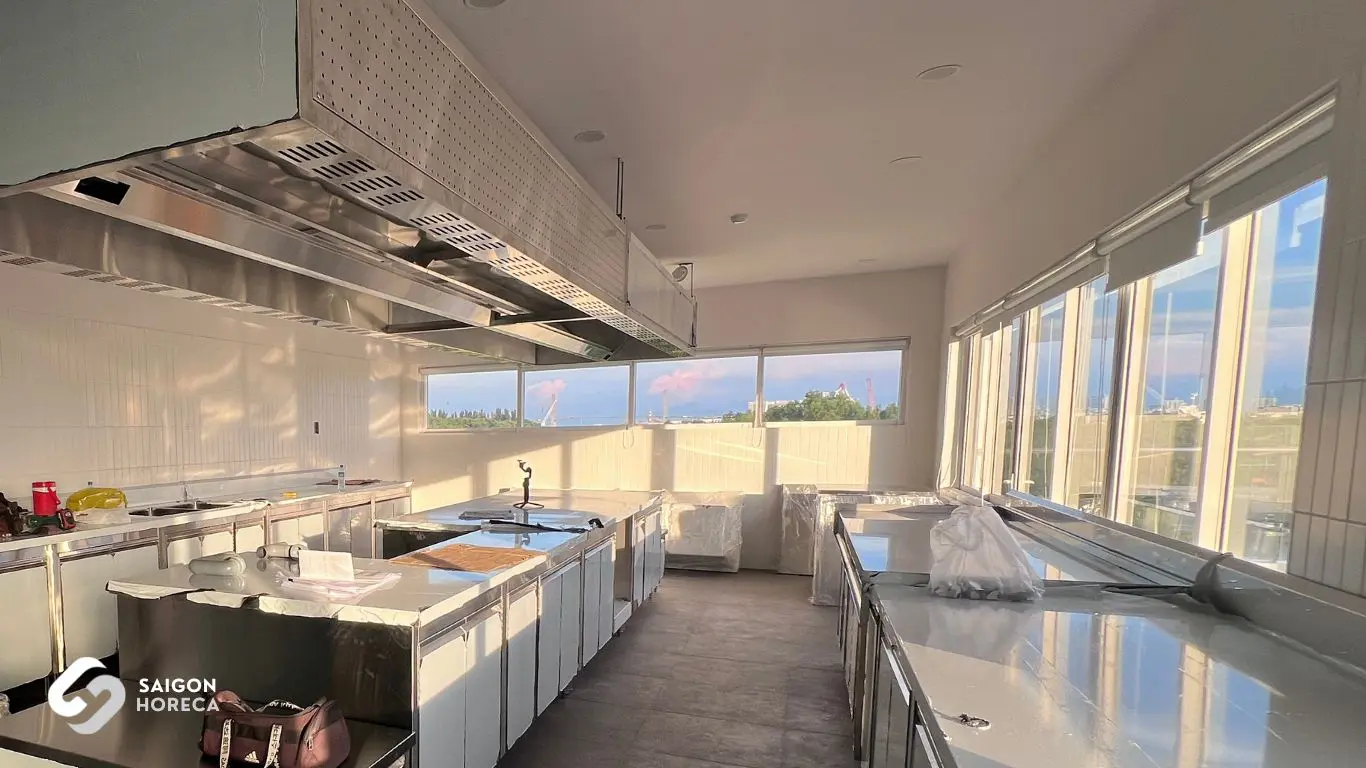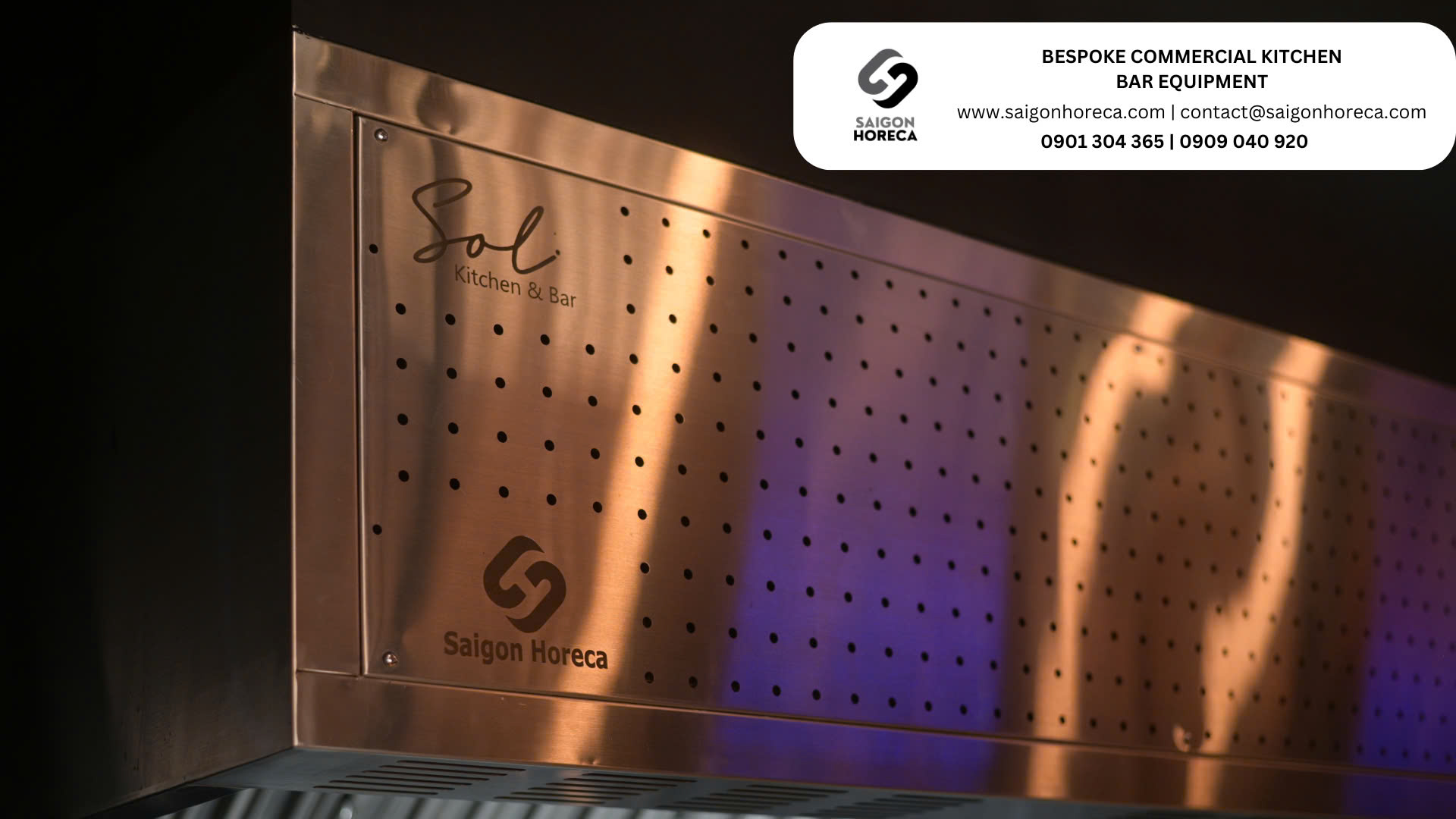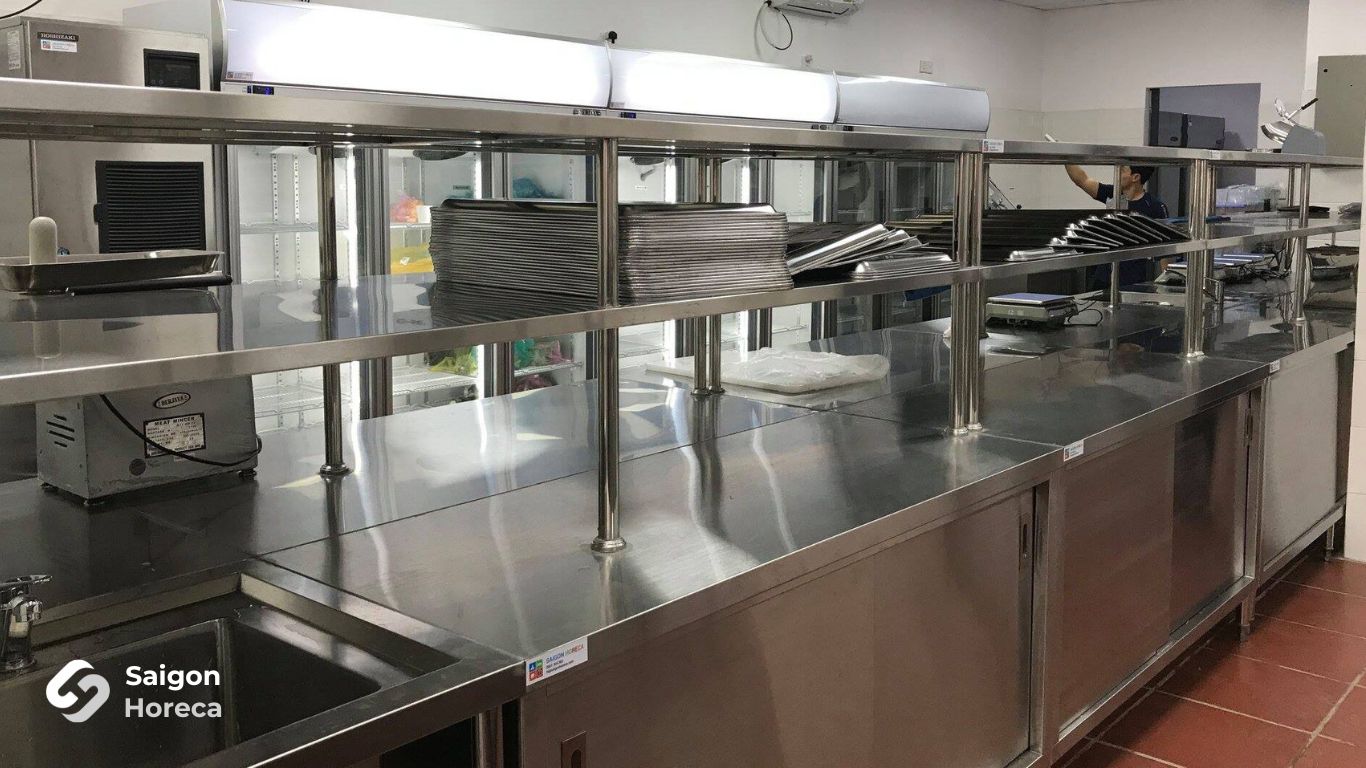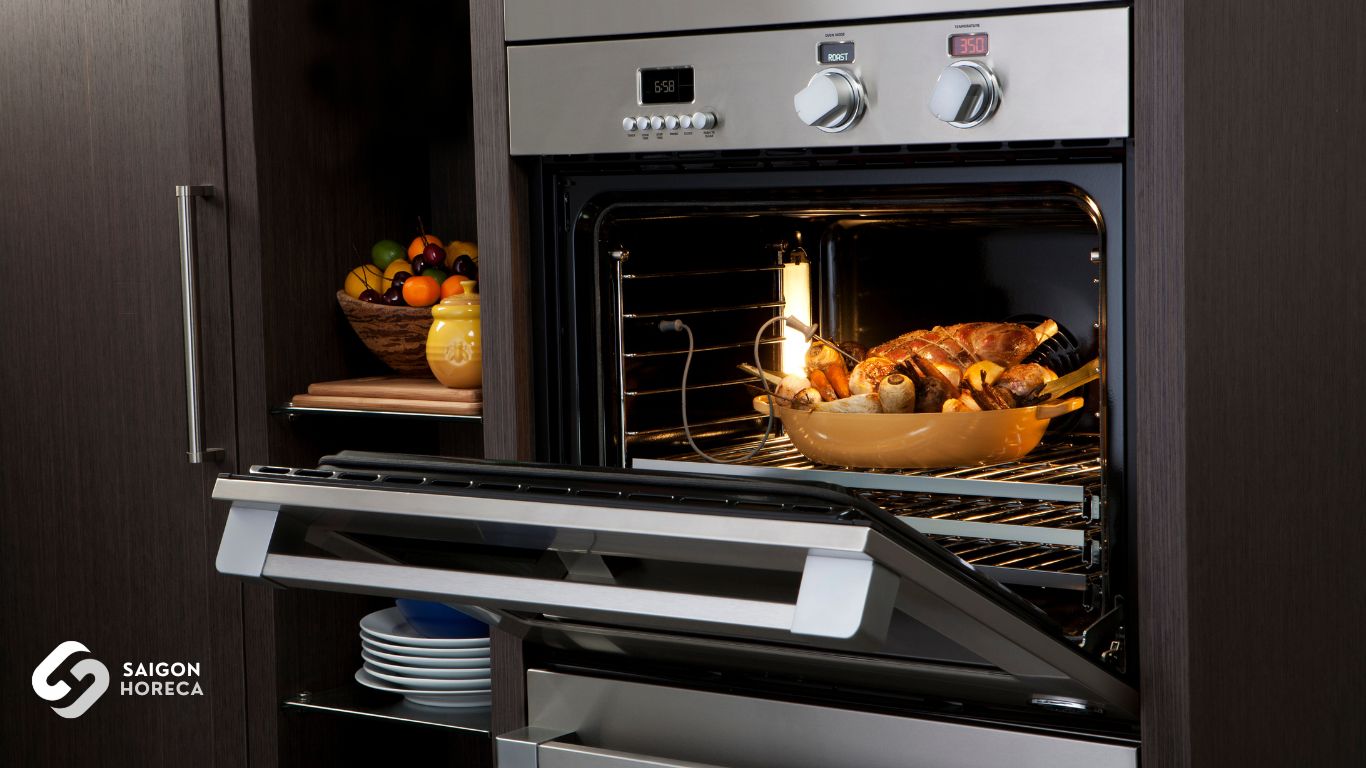In the context of the rapidly growing culinary and food service industry, investing in industrial kitchen equipment for a canteen […]
Read more

- News
What Is Restaurant Kitchen Design? Process, Standards, and Key Considerations
- August 4, 2025
Designing a restaurant kitchen is not simply a matter of placing stoves, sinks, or refrigerators into a given space. It is a carefully calculated process aimed at ensuring that every task from receiving ingredients and food preparation to cooking and plating, is performed efficiently, safely, and in full compliance with applicable regulations.
An effective kitchen layout enables staff to move smoothly, minimizes wasted time and energy, and helps reduce risks such as fire hazards, cross-contamination, or violations of hygiene standards. In contrast, a poorly designed kitchen can quickly become chaotic during peak hours, cause equipment to wear out faster, and lead to higher operational costs.
By gaining a clear understanding of what kitchen design truly involves, and by being aware of the proper process, regulatory standards, and important design considerations from the very beginning, both restaurant owners and head chefs can build a long-lasting, high-performing kitchen system where every square meter contributes to operational value.
In this Aritcle
1. What Is Restaurant Kitchen Design?
Every square meter, every piece of equipment, and every staff movement must be carefully planned to ensure a smooth workflow, save time, and maintain the highest level of safety.
Simply put, restaurant kitchen design is the process of planning the layout, selecting equipment, organizing functional zones, and integrating technical systems such as electricity, water, gas, ventilation, and fresh air supply. The goal is to ensure a seamless operation from receiving ingredients to prepping, cooking, plating, and delivering dishes.
What sets a professional kitchen design apart from a layout based on guesswork or habit is the following:
- Operational efficiency as the top priority. Every detail is centered around speed and performance.
- Strict adherence to safety and food hygiene standards. Everything from surface materials and floor slope to air circulation must meet regulatory requirements.
- Long-term cost optimization. A well-designed kitchen helps reduce equipment wear, saves energy, and lowers maintenance risks.
A good kitchen design enables the kitchen to run as precisely as a Swiss watch. A poor design, on the other hand, can turn peak hours into complete chaos.
Beyond technical drawings, kitchen design also involves assessing the specific needs of the business model including menu size, service capacity, staffing levels, and legal requirements to build a solution that fits and supports long-term operations.


The Role of Restaurant Kitchen Design
- Ensuring service productivity: A well-organized workflow speeds up dish preparation, reduces waiting times, and increases the number of service turns per shift.
- Maintaining food quality: Good design supports standardized processes, minimizes errors, and helps preserve consistent flavors.
- Complying with safety standards: Arranging cooking, washing, and storage areas in a unidirectional flow prevents cross-contamination while meeting fire safety, ventilation, and drainage requirements.
- Optimizing operational costs: Reduces energy waste, limits repairs, and extends the lifespan of equipment.
- Providing a foundation for business growth: A properly designed kitchen is easier to upgrade and expand as the business scales, without disrupting current operations.
A well-executed kitchen design from the start is like laying a strong foundation for a building. It determines the stability, efficiency, and growth potential of the restaurant for years to come.
2. The Restaurant Kitchen Design Process – Behind the Scenes of a Successful Project
When you see a smoothly operating restaurant kitchen, few realize that behind it lies weeks of research, testing, and adjustments. Below is the typical journey that a kitchen design project goes through, seen through the lens of Saigon Horeca.
1. Initiation: Listening Before Designing
Design doesn’t start with rulers or drawings, but with questions.
- What is the restaurant concept? (Izakaya, Steakhouse, Buffet, Fine Dining, etc.)
- How many seats and what is the peak service capacity?
- How many dishes involve hot, cold, grilled, fried items?
Objective: To clearly define the business model, menu size, service capacity, staffing levels, and relevant legal regulations.
Execution: Survey the space, take precise measurements, and discuss with the head chef or operations manager to understand current pain points and future goals.
For example, a 60-seat steakhouse in District 1 wants to increase its peak service capacity by 30%, but the kitchen area is only 25m². This is a challenging problem that needs to be solved starting from the design phase.
2. Developing the Layout and Workflow
Once requirements are understood, the engineering team begins drafting the operational design from ingredient delivery to plating.
- Follow the one-way flow principle: avoid mixing raw and cooked food pathways.
- Minimize the number of steps staff must take.
- Position equipment strategically to prevent bottlenecks during busy hours.
Designers use 2D drawings, 3D models, or specialized software to simulate equipment placement and movement flow.
3. Equipment and Materials Selection – Balancing Needs and Budget
This is when the question “How much to invest and how long are the benefits?” gets answered.
- Choose multifunctional equipment to save space.
- Prioritize 304 stainless steel materials for corrosion resistance and easy cleaning.
- Calculate electrical, water, and gas systems according to capacity requirements.
Objective: Meet required capacity, save energy, and ensure easy maintenance.
4. Installation and Testing – The Most Rigorous Trial
Before handover, the kitchen undergoes a trial run simulating peak hours. Every minor issue from water pressure, ventilation efficiency, to lighting, is recorded and immediately corrected. The result is a kitchen that is no longer a “testing ground” on opening day but a fully operational machine ready to perform at maximum capacity.


3. Important Notes and Common Pitfalls in Restaurant Kitchen Design
Even with clear plans and standards, many investors face costly mistakes or inefficient kitchen operations. Saigon Horeca has encountered numerous projects that had to be redone due to seemingly small errors.
Here are key points and the most common mistakes to avoid:
Important Notes
- Clarify needs from the start: Accurately determine the number of dishes, cooking methods, and peak service capacity.
- Prioritize workflow: Arrange equipment in the order of operations, not just according to the shape of the space.
- Plan for expansion: Leave space or pre-install connections for new equipment if scaling up later.
- Ensure easy maintenance: Heavy or fixed equipment must have accessible areas for repair and replacement.
- Consider environmental factors: Install grease filters and odor control systems to comply with environmental regulations.
Common Pitfalls
- Choosing equipment based on intuition: Purchasing machines that are too large or have unnecessary features leads to wasted capital and energy.
- Ignoring legal regulations: Installing equipment without proper safety distances or lacking certified fire protection systems risks fines or forced dismantling.
- Neglecting staff workflow: A design that looks good on paper but causes bottlenecks when 5 to 7 people work simultaneously.
- Insufficient ventilation: Installing only exhaust fans without considering fresh air supply results in a stuffy kitchen that negatively affects staff health.
- Cutting corners on materials: Using low-quality stainless steel or unsuitable materials causes faster wear, dirt accumulation, and difficulty in cleaning.
Experience from Saigon Horeca: Treat your restaurant kitchen as a long-term investment. A well-planned design from the start not only ensures smooth operation but also saves hundreds of millions in repair costs later.


Saigon Horeca – Expert in Upgrading Compliant Kitchen Spaces
A well-designed restaurant kitchen combines operational science, technical standards, and the owner’s long-term vision. A poorly planned design will reveal problems within months of operation: congestion, equipment breakdowns, rising costs, and even loss of customers due to declining service quality.
Therefore, investing in kitchen design from the beginning is investing in your restaurant’s efficiency and reputation for years to come. When working with professionals who understand industry standards, have practical experience, and can anticipate future needs, you minimize risks and maximize every square meter of kitchen space.
If you are preparing to open a restaurant or want to upgrade your current kitchen, don’t let design mistakes cost you hundreds of millions and customers to your competitors. Contact Saigon Horeca today!
Monday - Friday
from 8h00 to 18h00
40 Street No. 6, Melosa Garden, Phu Huu Ward, Thu Duc, HCMC
Contact anytime
Looking to elevate your grilled dishes with a Salamander Grill? With its ability to grill quickly and evenly while giving […]
Read more




